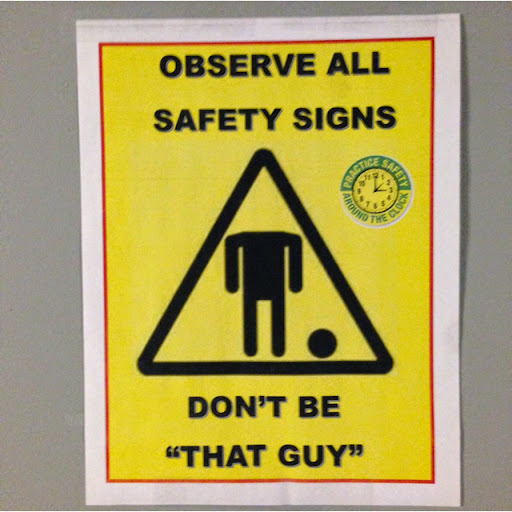James R Schubert
age ~90
from Beavercreek, OH
- Also known as:
-
- Jas R Schubert
- Jackie Schubert
- Luisa Padilla Quinonez
- Luisa Padilla
- Luisa Quinones
- Phone and address:
-
4243 Merrimac Ave, Dayton, OH 45405
(937)2783363
James Schubert Phones & Addresses
- 4243 Merrimac Ave, Dayton, OH 45405 • (937)2783363
- 288 Redwood Blvd, Dayton, OH 45440
- Beavercreek, OH
- Oxford, OH
- Port Clinton, OH
- Mechanicsburg, PA
- Montgomery, OH
- Orlando, FL
Specialities
Labor and Employment • Americans with Disabilities Act • Employment Discrimination
Lawyers & Attorneys

James Schubert - Lawyer
view sourceSpecialties:
Labor and Employment
Americans with Disabilities Act
Employment Discrimination
Americans with Disabilities Act
Employment Discrimination
ISLN:
901670241
Admitted:
1985
University:
University of Dayton, B.A., 1982
Law School:
University of Dayton, J.D., 1985
Name / Title
Company / Classification
Phones & Addresses
SCHUBERT FLEMING ENTERPRISES, LLC
CINCINNATI COLLEGES OF PHARMACY ALUMNI CORPORATION
Cincinnati, OH
JAMES S. SCHUBERT DISTRIBUTING CO., INC
Cincinnati, OH
Us Patents
-
Conveyor System For Can End Conversion Systems
view source -
US Patent:6405853, Jun 18, 2002
-
Filed:Nov 24, 1999
-
Appl. No.:09/449269
-
Inventors:Steven T. Cook - Miamisburg OH 45342
James R. Schubert - Miamisburg OH 45342
Stephen P. Common - Miamisburg OH 45342 -
International Classification:B65G 1744
-
US Classification:1988038, 1988037, 19880315
-
Abstract:The transfer nest for an endless conveyor belt of reinforced flexible rubber-like material, optionally with cogs or teeth on its underside, a series of such nests fitted into holes in the belt. The nests are attached to the belt solely at their opposite edges on lines extending transverse to the belt. The belt with attached nests, having end shells trapped therein, is moved stepwise through progressive conversion tooling for making shells into completed can ends. Shells are positively seated into the nests by moving the shells through a discontinuous entrance rim, preferably defined by the upper parts of a circular array of independent flexible stepped (preferably L-shaped) fingers which support the shells which are each trapped in a nest as the nests are transferred through the conversion tooling. Completed ends may be carried around the end of the conveyor upper flight, and the ends can be ejected from the nests.
-
Conveyor System For Can End Conversion Systems
view source -
US Patent:6695132, Feb 24, 2004
-
Filed:Apr 19, 2002
-
Appl. No.:10/125859
-
Inventors:Steven T. Cook - Bellbrook OH
James R. Schubert - Dayton OH
Stephen P. Common - Dayton OH -
Assignee:Dayton Systems Group, Inc. - Miaimisburg OH
-
International Classification:B65G 2300
-
US Classification:1988321, 72361
-
Abstract:The transfer conveyor system utilizes at least one endless conveyor belt of reinforced flexible rubber-like material with cogs or teeth on its underside and with a series of nests fitted into holes in the belt. Nests for carrying can end shells are attached at their opposite edges to the belt. The belt is supported by and routed around an idler drum, located outside the press frame posts and by a toothed drive drum located within the press frame adjacent the opposite frame posts. Progressive conversion tooling for making shells into completed easy-open can ends is located between the posts above and below upper and lower tooling sets. The drive drum is provided with circumferential teeth for a positive drive to the belt. Attachments of nests to the belt are located on transverse center lines which permit the flat nests to travel around the end turns of the belts. Shells are positively seated into the nests and held by a circular array of independent flexible stepped fingers as the nests are transferred through the conversion tooling.
-
Can End With Retained Tear Strip
view source -
US Patent:45039895, Mar 12, 1985
-
Filed:Feb 1, 1984
-
Appl. No.:6/575904
-
Inventors:Omar L. Brown - Kettering OH
Don B. Peters - Dayton OH
James R. Schubert - Dayton OH -
International Classification:B65D 1734
-
US Classification:220269
-
Abstract:An end structure for an easy opening container includes a rivet formed in a pour panel defined by a non-continuous scoreline. Upon rupture of the scoreline by a tab, which is affixed to the panel by the rivet, both the tab and pour panel are retained on the end wall. The scoreline may include a region of minimal residual in the region which is initially popped and regions of increased residual along the length of the scoreline in the direction of the fracture. The scoreline forward and adjacent to the rivet is of a configuration which includes changes of direction rather than being a smooth continuous curve and cooperates with the stepped scoreline to reduce blow-off. Also provided is a coined region radially outward of the rivet and the panel radius to create slack such that when the container is pressurized, the lifting end of the tab is forced downwardly. Associated with the coined region is a localized coined panel radius which controls the location of the possible end buckle to reduce scoreline fracture due to buckle. Provision is made to reduce laceration and an improved ring-pull tab acting as a Class 2 lever is disclosed.
-
Method Of And Apparatus For Manufacturing Tabs For Easy-Open Can End
view source -
US Patent:57411050, Apr 21, 1998
-
Filed:Jan 31, 1997
-
Appl. No.:8/792895
-
Inventors:James R. Schubert - Dayton OH
John F. Schubert - Dayton OH
Steven T. Cook - Bellbrook OH -
Assignee:Dayton Systems Group, Inc. - Dayton OH
-
International Classification:B21D 5300
-
US Classification:413 25
-
Abstract:A method and an apparatus are provided for manufacturing a tab for use with an easy-open can end, which tab is free from any exposed protrusion or cut edge thereon that would otherwise contact a finger or a lip of the user, without an increase in the number of manufacturing steps. A tab, attached to a carrier strip by a joint, is formed in a tab forming process, and the tab is severed from the strip in a joint severing process wherein the joint is cut off close to the tab nose to separate the tab from the strip. The tab with a protrusion which has a cut edge, remaining on the tab nose, is lowered while being held against horizontal movement. The protrusion is brought into engagement with a curling surface of an arm which is supported to swing in a downward passage through which the tab descends. When the tab is lowered in the downward passage, the arm is swung to cause the curling surface to press against the tab and curl the protrusion onto the tab.
-
Easy-Open Container End
view source -
US Patent:56926367, Dec 2, 1997
-
Filed:Feb 22, 1996
-
Appl. No.:8/603887
-
Inventors:James R. Schubert - Dayton OH
-
Assignee:Dayton Reliable Tool & Mfg. Co. - Dayton OH
-
International Classification:B65D 1734
B21D 5144 -
US Classification:220271
-
Abstract:The invention, relating to an easy-open metal container end, places a portion of the metal of the tear panel (12), in the region where a score stop otherwise would be located, under compression by forming a short coined depression or bead (40) in the tear panel, preferably in the public side, close to the score line (15) at least at the end of the vent region (35) opposite from the inner hook (16), which is located at the radially inward end of the tear panel score line. During initial opening or venting action, as the rivet (25) is lifted by initial tab motion, separation proceeds along the score line, beneath the nose (28) of the tab (27). The metal adjacent and in this coined depression tends to move partially underneath the metal on the opposite side of the score line from the coined vent bead. This action provides sufficient disruption or retarding of the score line separation or rupture, during venting, to confine such separation to the vent region until internal pressure is vented. Further separation of the tear panel can proceed under control of continued raising tab motion and resulting opening force.
-
Resealable Beverage Container And Top Therefor
view source -
US Patent:60829443, Jul 4, 2000
-
Filed:Jan 25, 1999
-
Appl. No.:9/240841
-
Inventors:Henry C. Bachmann - Dayton OH
Steven T. Cook - Bellbrook OH
James R. Schubert - Dayton OH
John F. Schubert - Dayton OH
Lori E. Strong - Huber Heights OH -
Assignee:Dayton Systems Group, Inc. - Dayton OH
-
International Classification:B21D 5146
B21D 5150 -
US Classification:413 22
-
Abstract:A resealable can end is provided including a neck member and hat member which can be sealed onto and removed from the neck member of the end, and is capable of containing product under pressure if desired. This end can be added, as by a conventional seam, to a metal container body to obtain resealing containment of partial contents retained in the container, and to provide an improved mouth construction (or pour opening) for better pouring and for comfortable direct drinking from the container. Also disclosed are improved methods of and apparatus for making such a resealable hat and-neck type-of container end.
-
Easy Opening Container Wall
view source -
US Patent:39903761, Nov 9, 1976
-
Filed:Jun 19, 1974
-
Appl. No.:5/480835
-
Inventors:James R. Schubert - Dayton OH
Omar L. Brown - Dayton OH -
International Classification:B21D 5144
-
US Classification:113121C
-
Abstract:An easy opening container wall comprising a container wall of sheet material having a line of weakness therein defining a tear portion at least partially removable from the container wall. Removal of the tear portion provides a relatively sharp edge along the tear portion. A guard is provided along the periphery of the tear portion to protect the consumer from injury. The guard is interrupted adjacent the location at which the line of score is initially ruptured to facilitate such initial rupture. The outer periphery of the guard and the score line are configured and positioned relative to each other to minimize interference by the guard during the opening operation.
-
All Purpose Integral Rivet And Method Of Forming Same
view source -
US Patent:51196646, Jun 9, 1992
-
Filed:Nov 19, 1990
-
Appl. No.:7/615043
-
Inventors:James R. Schubert - Dayton OH
-
Assignee:Dayton Reliable Tool & Mfg. Co. - Dayton OH
-
International Classification:B21D 5138
-
US Classification:72356
-
Abstract:An improved integral rivet button and resulting rivet, and a process and tooling for forming such button, utilizes successive coining steps on material surrounding the base of an initial bubble formed on a can end, causing flow of material along the wall of the button toward its center. The successive coining at progressively lesser radii affords adequate metal in the bubble region to assure ultimate formation of an accurate button, assures a strong boundary region about the base of the button, and assures the rivet head is sufficiently large to prevent tear out of the tab at its juncture with the rivet. The initial coined boundary is located close to the juncture of the initial bubble wall with the remainder of the shell, where curvature of the initial bubble wall is concave in the direction of the bubble top and toward the ultimate public side of the end. Subsequent coining at one or more locations radially inward from the initial coined boundary causes material to flow into the region from which the button ultimately is formed, and such material is reshaped into a precise button form having improved overall thickness and strength. Tooling design is such that intermediate shapes formed at progressive tool stations are compatible with next tooling stations to promote smooth transition of metal.
Resumes

James Schubert
view source
Engineering Manager
view sourceWork:
Engineering Manager

James Schubert
view source
James Schubert
view source
James Schubert
view source
James Schubert
view source
James Schubert
view source
Parts Specialist
view sourceWork:
Parts Specialist
Youtube
Myspace
Plaxo

james Schubert
view sourceSouth Ozone Park, NYS S Locksmiths Past: Jr. Engineer at Gilsanz Murray Steficek
Flickr

James Schubert
view source
James Schubert
view source
James Jamie Schubert
view source
James Schubert
view source
James Schubert
view source
James Schubert
view source
James Schubert
view source
James Schubert
view sourceGoogleplus

James Schubert
Work:
College of Coastal Georgia - Tutor
Education:
College of Coastal Georgia - Mechanical Engineering, Southern Polytechnic State University - Mechanical Engineering

James Schubert
Work:
S & S Locksmiths Inc - V-P
Education:
Polytechnic University of New York

James Schubert

James Schubert

James Schubert

James Schubert

James Schubert
About:
Hello. I am glad you found my web album. I live part time in Prescott, AZ and part time in Phoenix. Currently I am providing dog portraits in colored pencil or charcoal for people who are willing...
Classmates

James Schubert
view sourceSchools:
St. Alexander School Villa Park IL 1964-1968
Community:
Kathleen Borchardt

James Schubert
view sourceSchools:
Woodrow Wilson Junior High School Clifton NJ 1962-1966
Community:
Dennis Cantwell, T Bernard, Bob Mcdermott, Joseph Reich

James Schubert
view sourceSchools:
Woodsboro High School Woodsboro TX 1976-1980
Community:
Diane Rankin, Jesse Villarreal, Sandy Sides

James Schubert
view sourceSchools:
Claremont Middle School Claremont CA 1953-1956
Community:
Jeffrey Elliott, Anthony Boyd, Kimberlea Evans, Talitha Johnson

James Schubert
view sourceSchools:
West Deer High School Cheswick PA 1975-1978
Community:
Sandra Osburn, Mike Wilson, Marc Ledoux, Lawrence Terry, Walter Soss

James Schubert
view sourceSchools:
Curtis HighSchool New York NY 1947-1951
Community:
Robert Mcghie

James Schubert
view sourceSchools:
Cretin-Derham Hall High School St. Paul MN 1959-1963
Community:
Chuck Doole, Patrick Lamey, Michael Tierney, Richard Rushton, Sheila Connolly, Jeffrey Proud, David Hartung, Gary Keeler, Phyllis Linde, Galen Merrill, James Sebesta

James Schubert
view sourceSchools:
Minnesauke Elementary School East Setauket NY 1981-1982, SS. Philip & James School St. James NY 1982-1990
Community:
Garrison Gross, Reina Capdevilla
Get Report for James R Schubert from Beavercreek, OH, age ~90



















